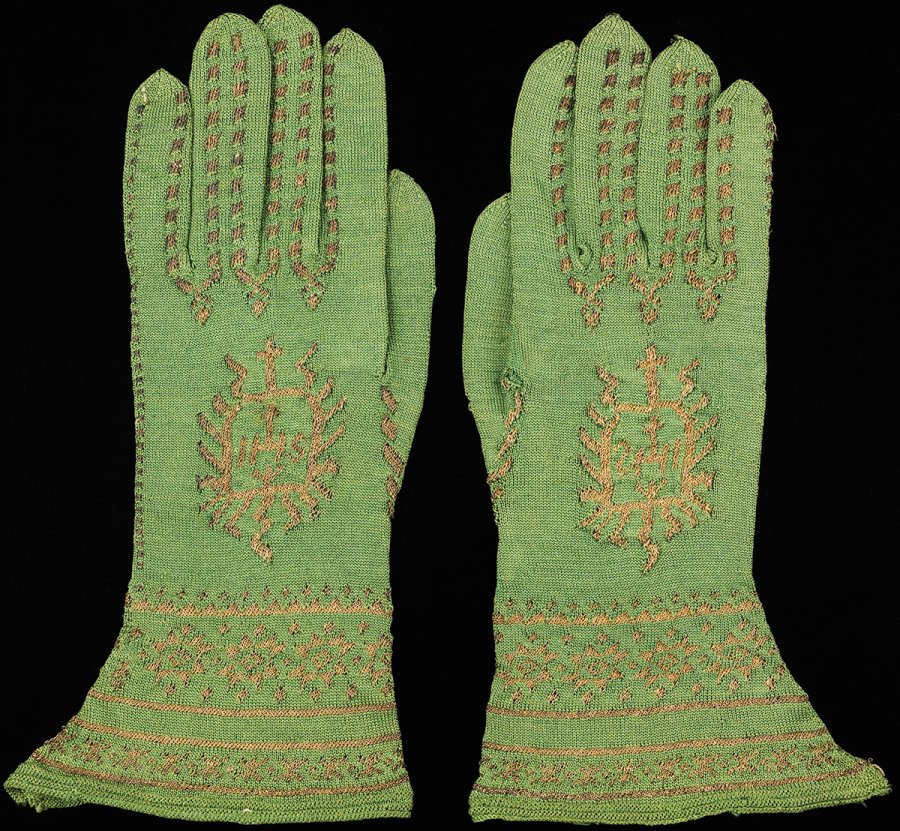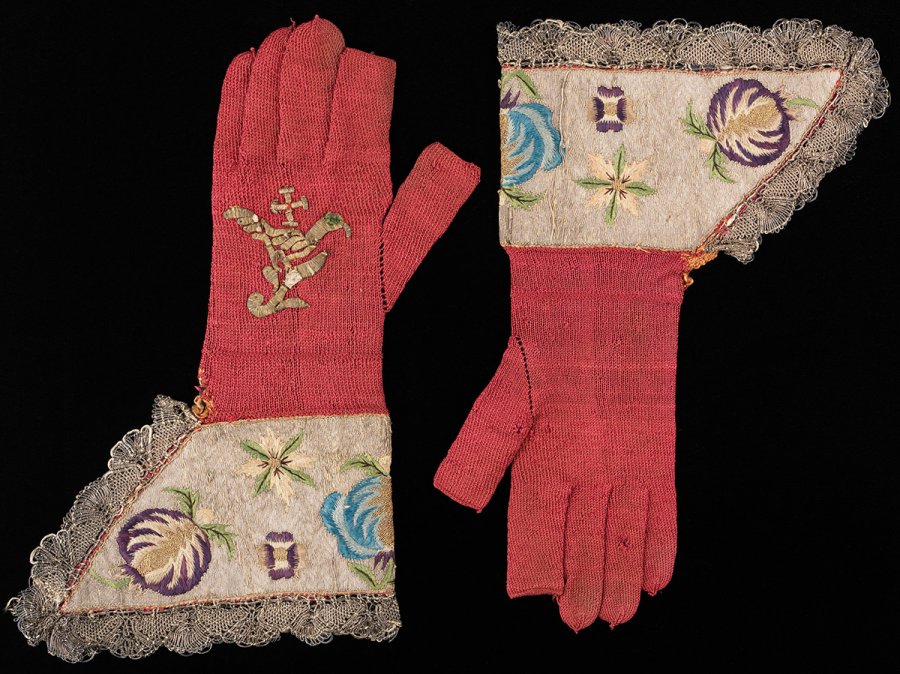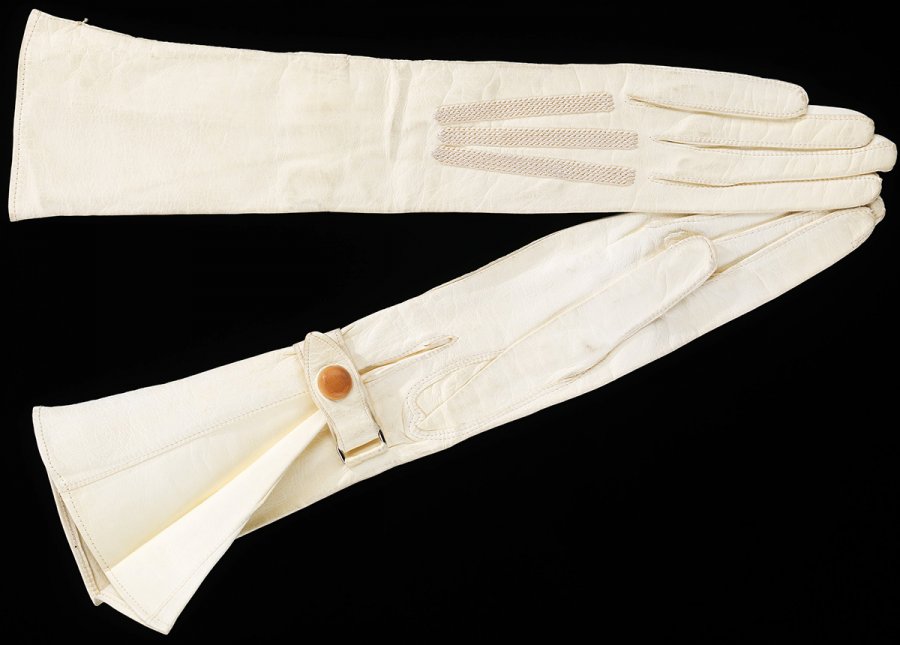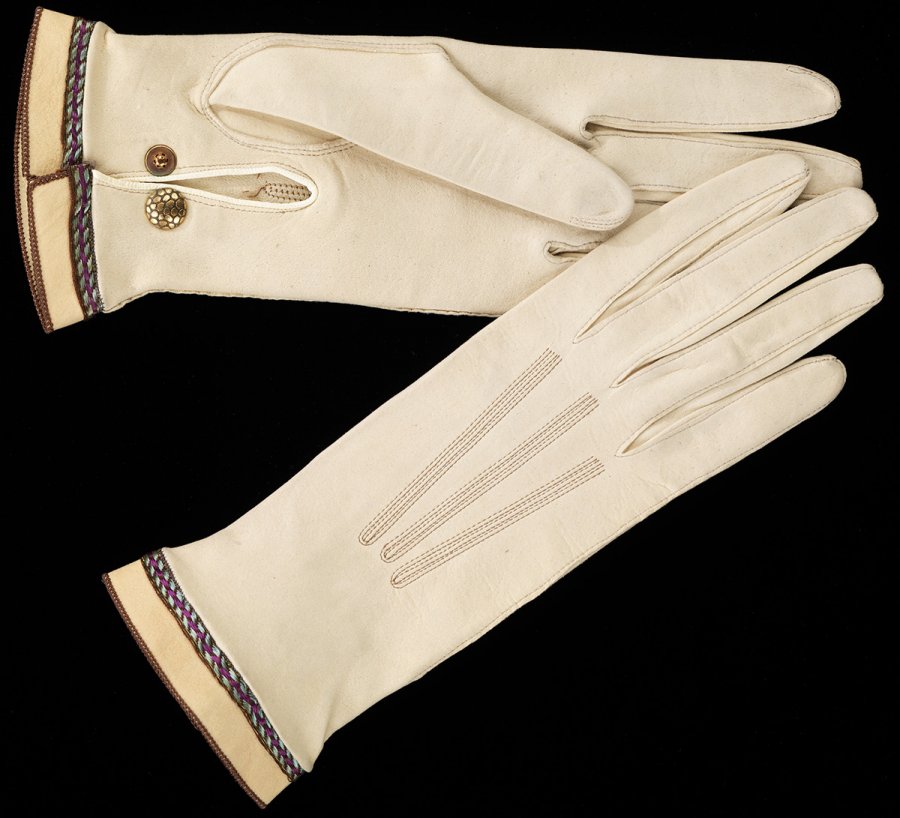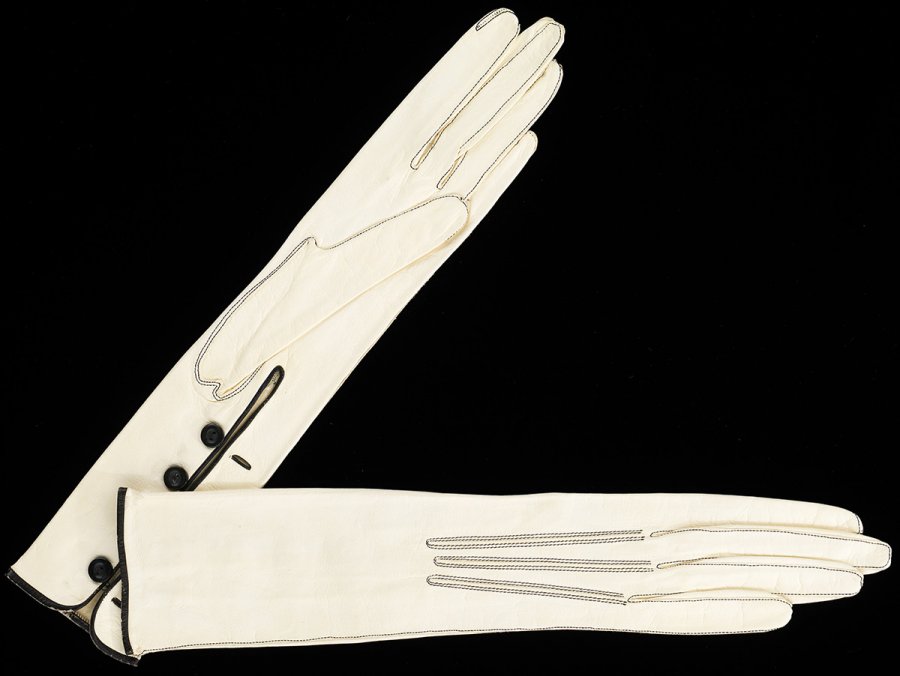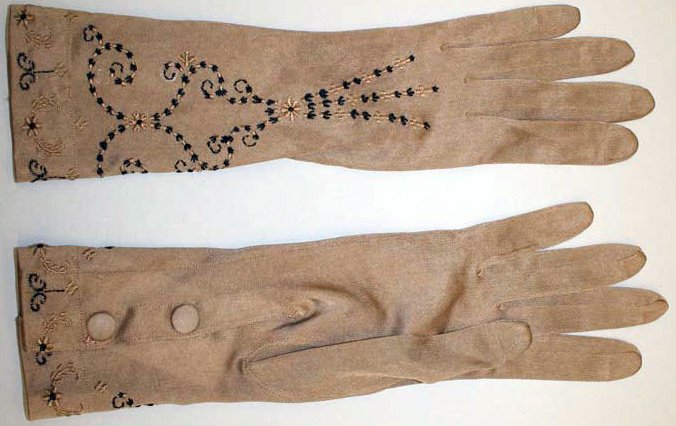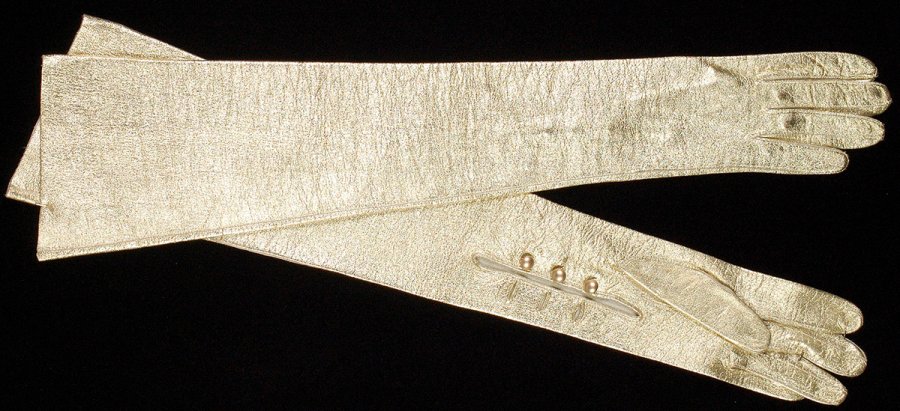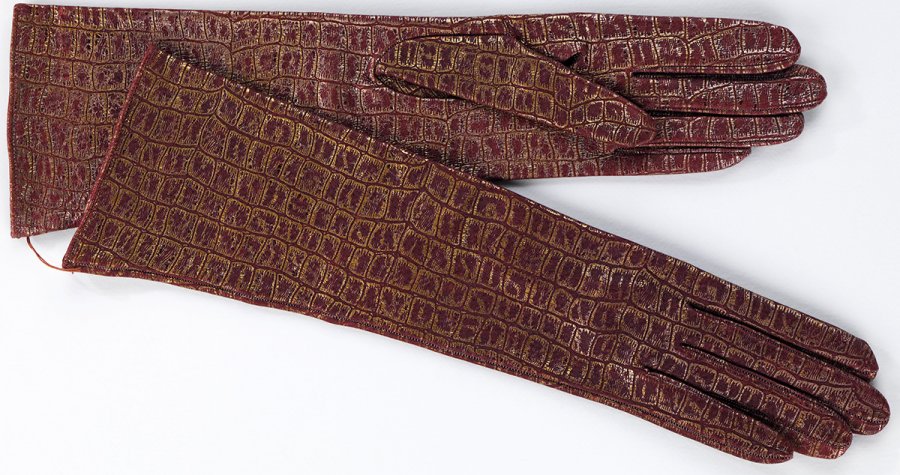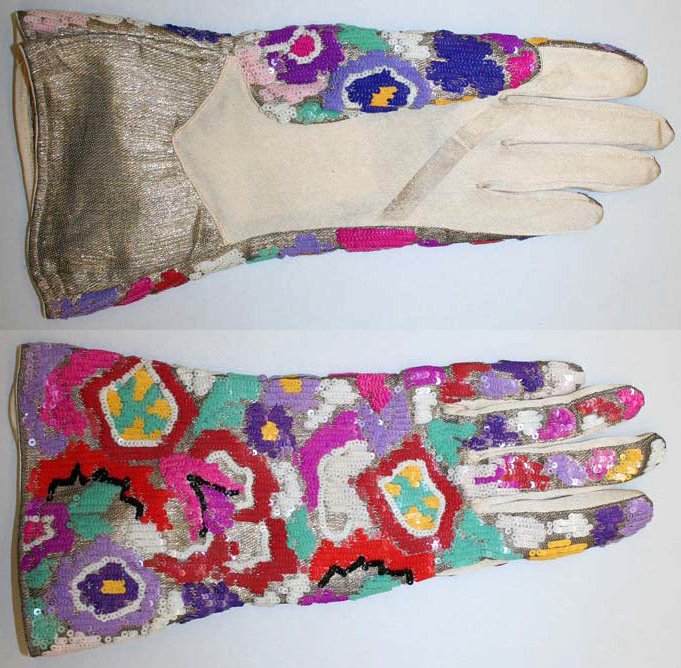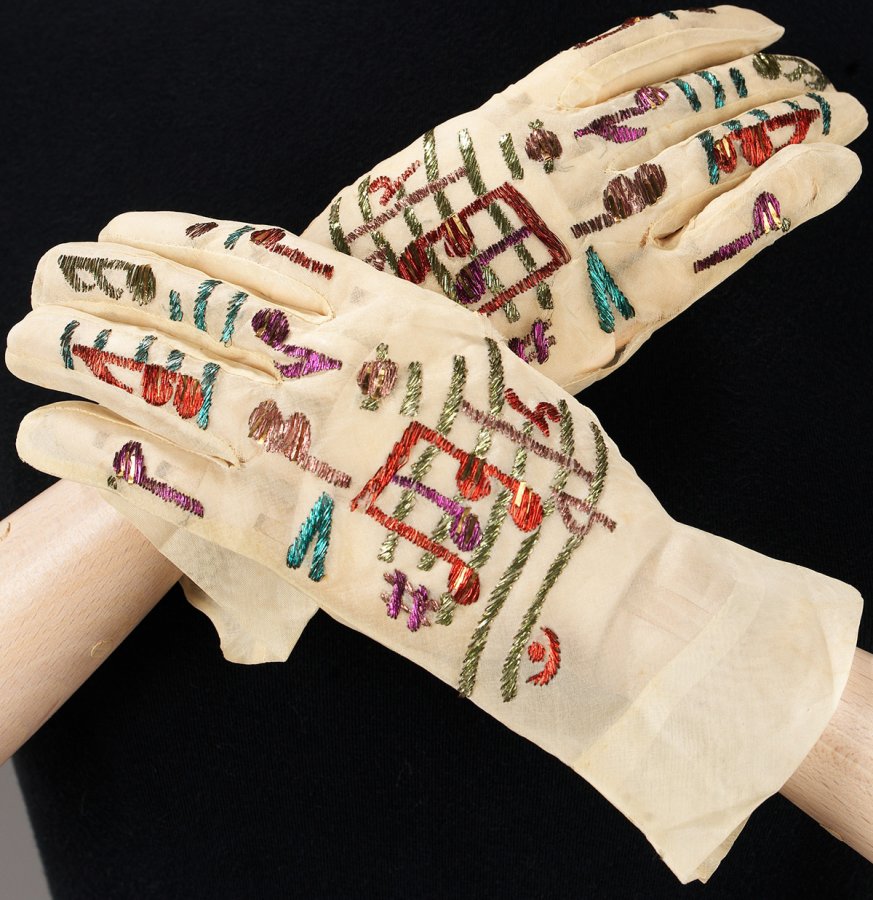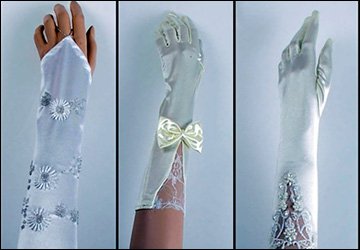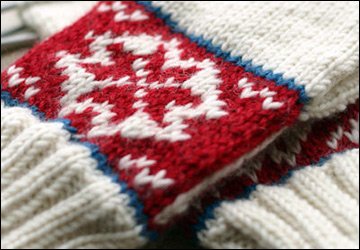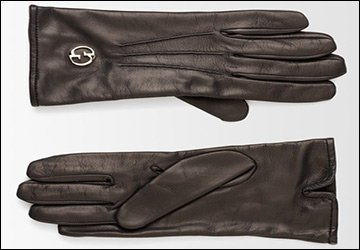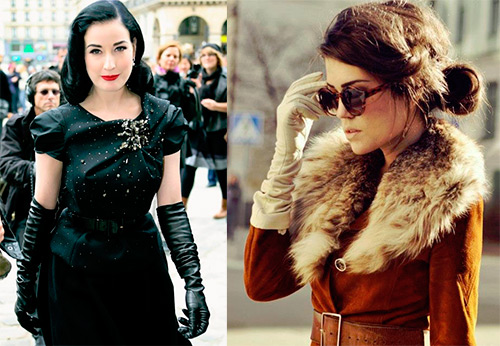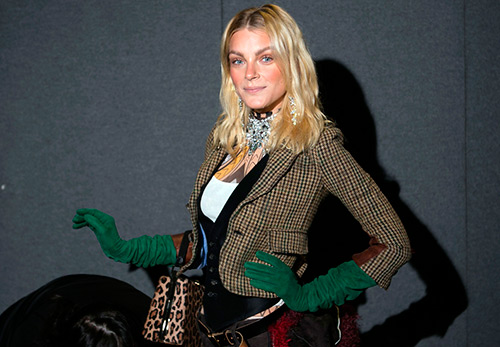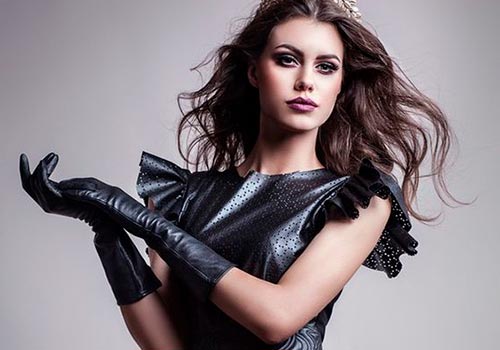Fashionable accessories
Glove history
Gloves are an integral part of both women's and men's wardrobe. They were needed both in ancient times and today. But recently, more and more attention has been paid to gloves.
Gloves are worn not only for warmth but also for decoration. They come in a variety of materials, lengths and colors.
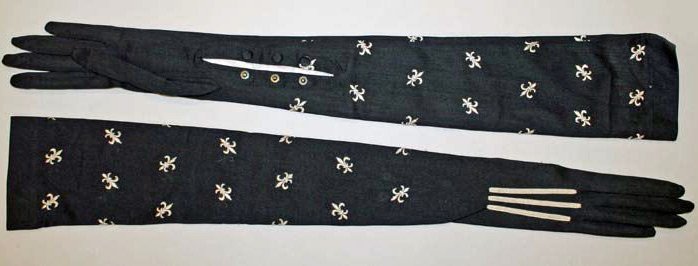
Glove history
Let's remember their historical past. Let us recall only that part of the biography of gloves in which they became an adornment for women.
Since the 11th century, women have worn elbow-length white linen gloves as jewelry.

In the photo there are long light-colored gloves from the beginning of the 20th century.
1900-1920 years.
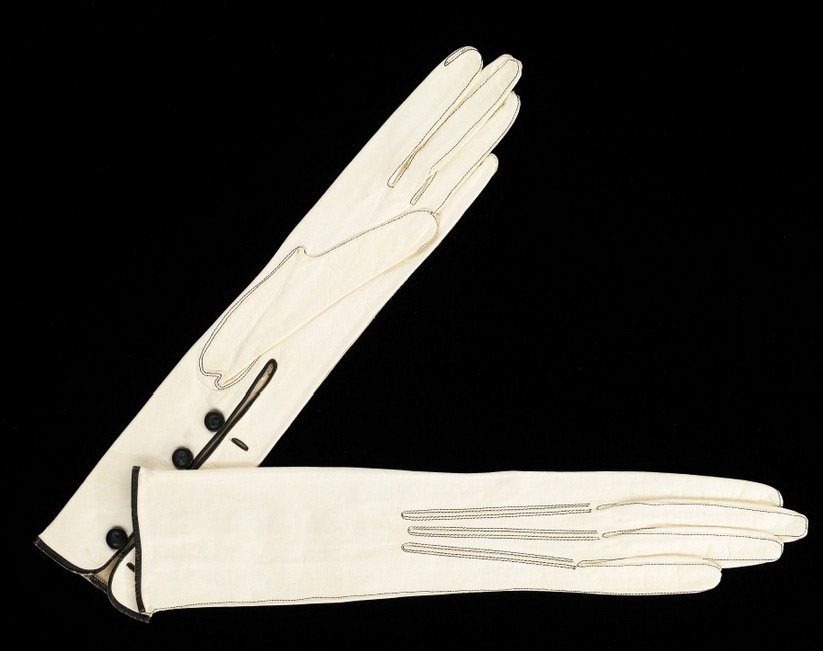
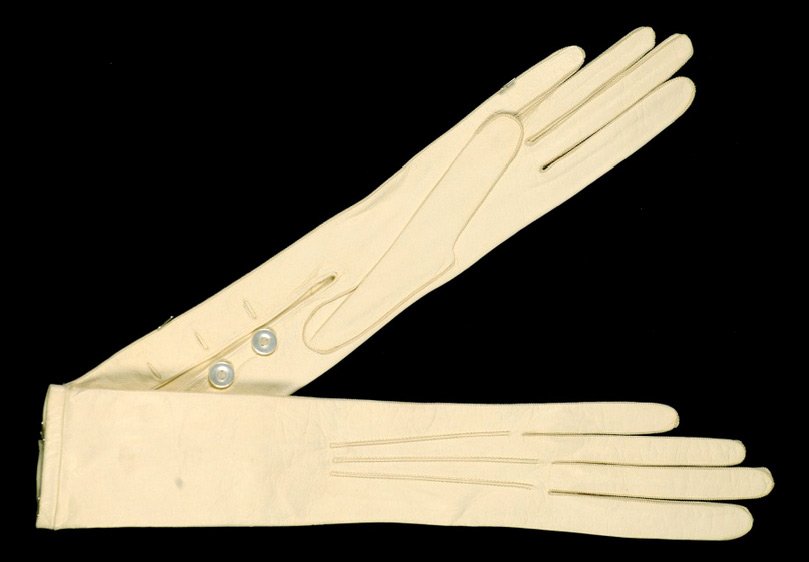

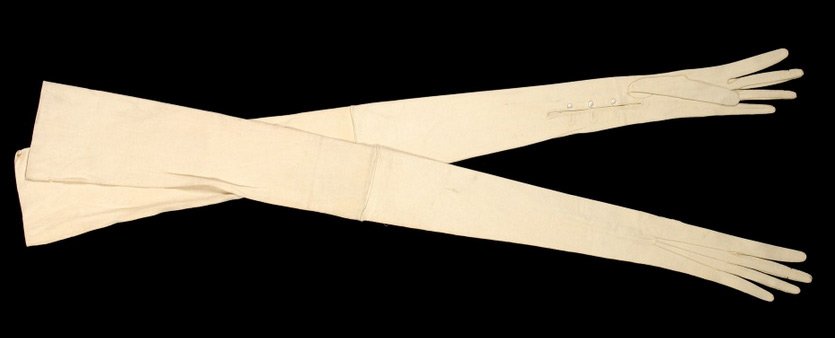
In the Middle Ages, the range of elegant gloves expanded - silk and leather gloves decorated with embroidery or precious stones appeared. Such gloves could be an adornment of any outfit. The owner of such gloves could emphasize their status and material well-being.
At the end of the 16th century, men, who also did not lag behind women in decorating themselves, had gloves with wide sockets. On the edges they were trimmed with fringe, remember the musketeers. But at that time, the shape of such gloves did not touch the gentle woman's hand. All this will certainly happen, but a little later.
XIX century. Mitts appeared. At the same time, men began to wear unadorned gloves. Their style began to emphasize the good cut and quality of the material. Moreover, for different occasions, different gloves were also worn: suede for the uniform, kid gloves for a civilian dress.
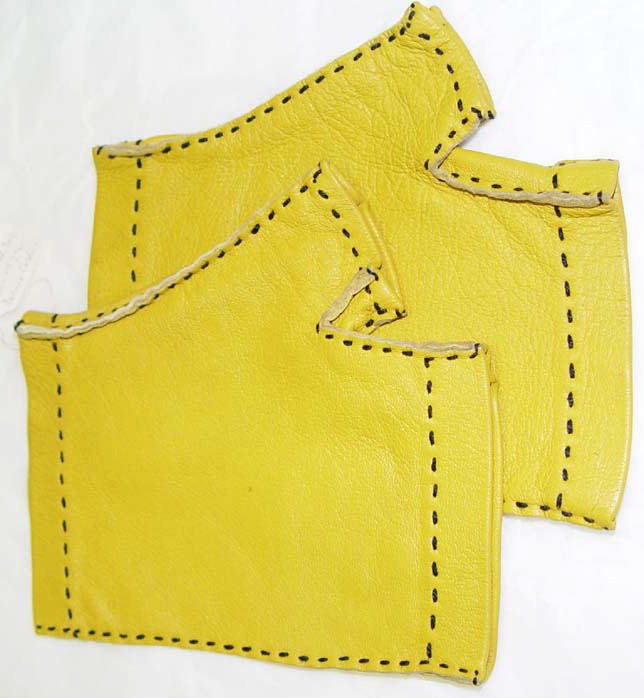
Before the time of Peter the Great, both men and women had already worn gloves in Russia. They were decorated with embroidery, precious stones, pearls, beads. They were made of velvet, brocade and leather. Gloves both warmed and decorated, emphasizing the eminence of the owner or wearer.
The main suppliers of gloves in European countries were the Frenchman Mauer, in England - Derby, in Russia - the merchants Bakhrushin. The Bakhrushin merchants were not only the main suppliers of gloves, but also engaged in charitable activities, for which they were awarded the title of honorary citizens of Moscow.
Evening and ballroom gloves since the mid-19th century have been wrist-length with a button closure. These gloves were made of white husky, and were pulled over the hand so that there was not a single wrinkle. The coat should be of the highest quality - elastic, highly stretchable, retaining its gloss and taking its original shape. Apparently, because it was extremely difficult to put on these gloves, it was forbidden to take them off according to the rule of etiquette. But they only wore them at home.
At the turn of the 19th and 20th centuries, knitted gloves from fildepers and fildekos came into fashion. They had a woven pattern and were in addition to fishnet stockings. Ballroom gloves during this period were finished with coral bracelets, pearls, gold laces with tassels, a garland of small flowers, marabou feathers, lace. Somewhat later, ballroom gloves became higher than the elbow.
Comments and Reviews
Add a comment
Rating news
Shades of clothing that make women look younger
What shades of hair make women younger: rules and photos
Funny wedding dresses - photos and ideas
12 most expensive down jackets for the winter
How to look 25 at 40: tips from supermodels
Beautiful schoolgirls
Anti-aging haircuts and hairstyles for women
Fashionable skirts for autumn and winter
Fashionable women's trousers for the cold season
Fashionable and stylish sandals for summer 2024
Spring-summer 2024
 Fashionable dresses and tops with thin spaghetti straps
Fashionable dresses and tops with thin spaghetti straps
 Bandana tops: how to wear stylishly and beautifully
Bandana tops: how to wear stylishly and beautifully
 How to put together the perfect men's wardrobe for the summer
How to put together the perfect men's wardrobe for the summer
 Trendy shorts for spring-summer 2024
Trendy shorts for spring-summer 2024
 Fashionable skirts for spring-summer 2024: a guide to online shopping
Fashionable skirts for spring-summer 2024: a guide to online shopping
 The most fashionable dresses spring-summer 2024: styles and colors
The most fashionable dresses spring-summer 2024: styles and colors
 Fashionable total look 2024: image ideas and trends
Fashionable total look 2024: image ideas and trends
